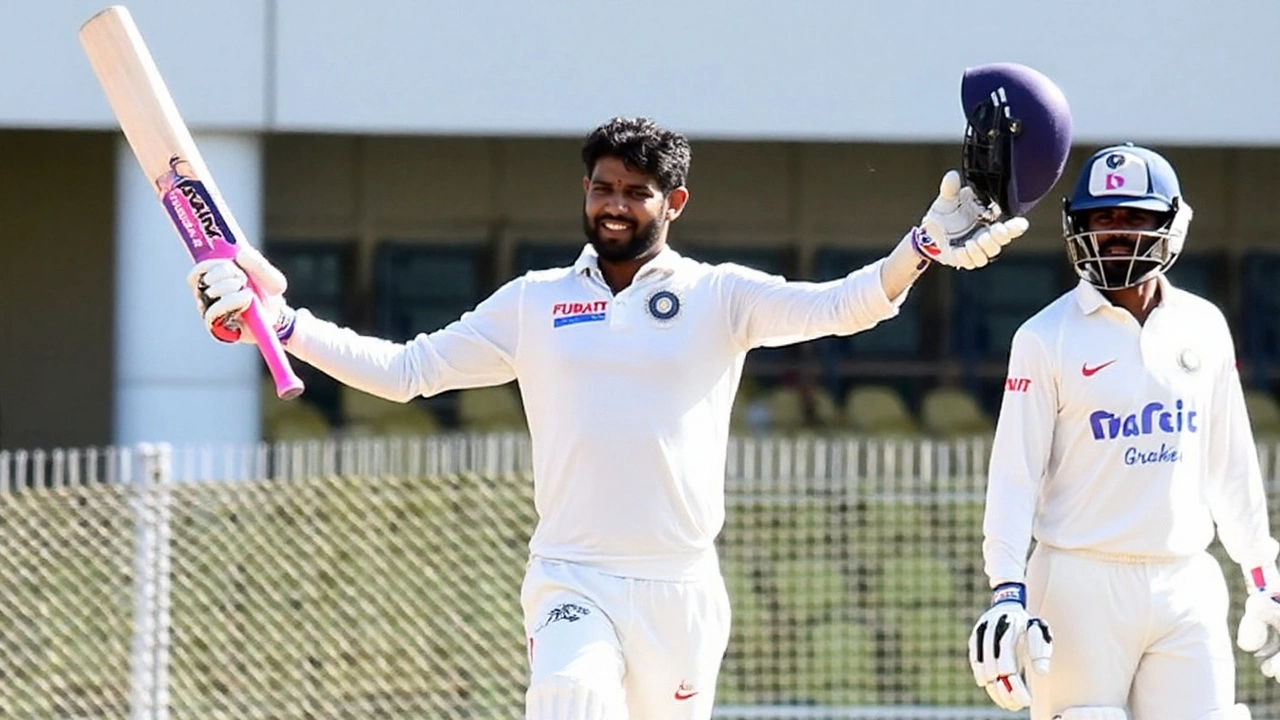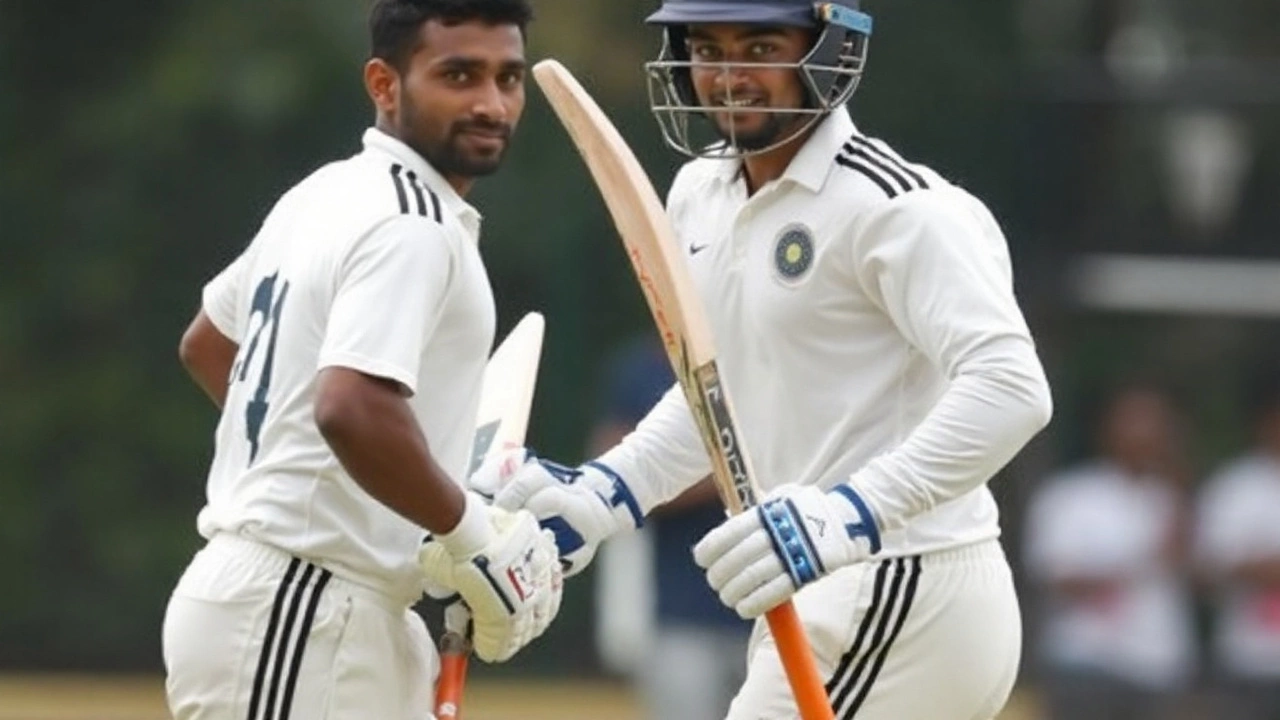More than 1,250 runs were piled up across the two semi-finals in Bengaluru, and only one fixture produced a clear path to the final. Central Zone punched their ticket via a hefty first-innings lead against West Zone, while South Zone’s 536-run platform left North Zone scrambling and the clock working against them.
The four-day ties, played from September 4–7 at the BCCI Centre of Excellence Ground in Bengaluru, followed the traditional first-class blueprint: bat long, grind hard, and win the big moments. In the Duleep Trophy 2025, that usually means the first-innings lead is king when time runs out.
South Zone seize control against North Zone
South Zone set the tone early with a commanding 536 in their first innings. That kind of total changes how a game is played: fields spread, bowlers tire, and every North Zone session becomes about survival first, scoring later. By the time South came out again and moved to 95/1 in 24.4 overs, they had done enough to keep the pressure squarely on the opposition.
North Zone found pockets of resistance. SP Khajuria held firm with an unbeaten 53 off 119 balls, and A Badoni’s 40 off 57 kept the board moving when it could easily have stalled. Those contributions mattered, not just for runs but for time. On these surfaces, soaking up overs can be as valuable as a rapid fifty; it lets the middle and lower order breathe and reshapes how the opposition rotates their bowlers.
The South Zone approach suggested a team in control: pile on a massive first innings, then return for a brisk second dig to widen the gap or shut down any late chase. With 95/1 on the board, they had freedom to dictate tempo—either bat long enough to bat North out of the contest or set up a scenario where only a batting collapse could swing momentum. The lack of panic told its own story.
At the BCCI Centre of Excellence Ground, run-scoring is usually a question of patience and method. The outfield rewards timing, but it’s the new ball spells and the ability to hit the top of off for hours that split teams in four-day cricket. South’s batting showed discipline across phases—early consolidation, a strong middle session, and late-overs squeeze—which is why the 536 looked more like a match plan executed than just a big number.
As is standard in the Duleep Trophy, if a semi-final ends in a draw, the first-innings lead decides who goes through. With South already back at the crease and 95/1, the balance of play tilted their way. Even without every line of the scorecard in public view, the shape of the match pointed to South holding the aces heading into the final reckoning.

Central Zone outlast West Zone in a run-glut draw
The second semi-final was a marathon. West Zone put up 438 in their first innings—good by most measures, but Central Zone replied with a towering 600 in 164.3 overs. That 162-run cushion effectively settled the contest under the tie-break rules, even as the match drifted to a draw with West 216/8 in 53.3 overs by the close.
Central didn’t just score big; they controlled time. Chewing through 164.3 overs does more than build a lead—it drains the opposition’s quicks, tests the spinners’ lines on a flat pitch, and forces the fielding captain into defensive shapes. When the calendar is your opponent, a 600 built over two days is a knockout blow.
West’s 438 was a solid platform, but the difference lay in ruthlessness after the first two sessions. Central stretched stands, cashed in on anything short or full, and turned 300 into 600 without leaving many windows for a quick collapse. Once that door shut, West were batting mostly to level the game and manage risk, not to chase a win.
The draw, then, wasn’t a stalemate—it was Central Zone’s win by the book. In this tournament’s format, a first-innings lead is the currency that counts. On that metric, Central were decisive and fully deserving of their place in the final.
Both semi-finals underlined why the zonal format endures. It compresses India’s domestic talent into five teams, forces contrasting styles to clash, and rewards first-class habits: tight lines with the ball, unhurried batting, and sharp fielding. Bengaluru’s Centre of Excellence, with its multiple strips and long days that test discipline, is a fitting stage.
What does this set up? Central Zone, already through, will carry confidence from their 600-run statement and the control they showed across four days. South Zone, having dictated terms against North, look primed to meet them—assuming the first-innings equation holds as the numbers suggest. If that’s the final, it’s a balanced matchup: Central’s ability to bat deep against a South unit that can build scoreboard pressure and squeeze games from ahead.
One more thread stood out this week: how teams managed tempo. South batted with intent and then shifted gears smoothly in their second innings. Central batted long by design, trusting their top order to stretch sessions and their middle order to turn the screw. West and North had moments—West’s 438 was no small effort, and North’s Khajuria-Badoni passages kept hopes flickering—but the semi-finals rewarded the sides that stayed truer to first-class rhythms.
Semis are supposed to test temperament. In Bengaluru, they did exactly that. Central have their ticket. South, by all logic of position and procedure, look set to join them.

